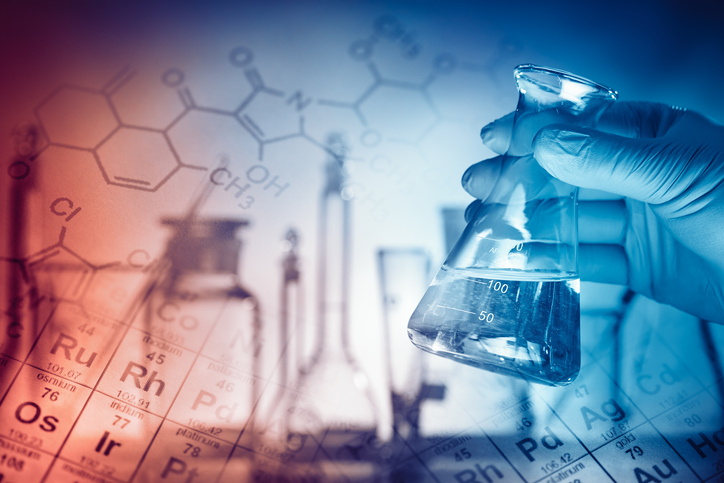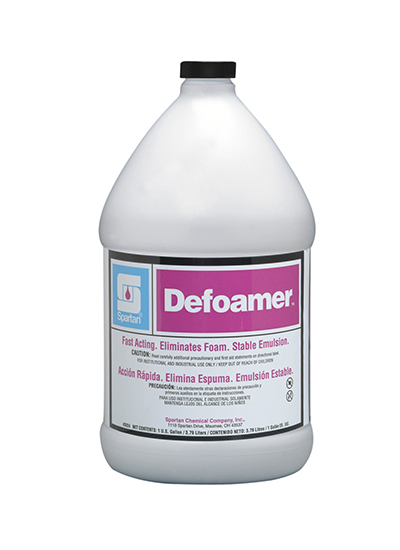A Complete Guide to Selecting the Right Chemical Defoamer for Your Applications
Recognizing Just How a Chemical Defoamer Functions to Improve Industrial Processes
Chemical defoamers play a crucial function in enhancing industrial procedures by successfully alleviating foam-related difficulties. What remains to be discovered is exactly how these defoamers can be tailored to meet details functional demands.
What Is a Chemical Defoamer?
A chemical defoamer is a material particularly created to get rid of the development or decrease of foam in different commercial procedures. Foaming can disrupt manufacturing efficiency, affecting the quality and performance of items in markets such as food and drink, drugs, and wastewater treatment. Defoamers are vital in these applications, as extreme foam can result in operational difficulties, such as overflow, lowered mixing performance, and impeded heat transfer.
These agents typically are composed of a mix of surfactants, oils, and various other ingredients that work to undercut the foam structure. They are made to promptly migrate to the foam's surface, successfully damaging the surface tension and permitting the collapse of bubbles. The option of a suitable defoamer is necessary, as various solutions might be customized for specific processes or kinds of foam (Chemical Defoamer). Factors such as compatibility with other components, temperature level stability, and the designated application play a considerable role in the effectiveness of a defoamer.
Systems of Defoaming Activity
The systems of defoaming action involve complicated interactions in between the foam and the defoamer structure. At the core of this procedure is the reduction of surface stress at the interface of the fluid and gas stages. When a defoamer is presented to a frothing system, it moves quickly to the surface of the foam bubbles, displacing the maintaining agents that add to foam stability. This displacement damages the foam structure, leading to bubble coalescence.
As smaller bubbles combine into bigger ones, the overall stability of the foam decreases. Additionally, certain defoamers may contain hydrophobic components that enhance their capacity to undercut the foam by developing an obstacle that prevents bubble formation. This dual action-- surface area stress decrease and destabilization-- permits a much more efficient breakdown of foam.

Furthermore, the viscosity and dispersing attributes of the defoamer play vital functions in its effectiveness. A well-formulated defoamer will certainly make sure quick migration and ideal efficiency, reducing foam development during commercial processes. By understanding these devices, markets can much better choose and use chemical defoamers to improve functional effectiveness and product top quality.
Kinds Of Chemical Defoamers
Chemical defoamers can be categorized right into several kinds, each tailored to specific applications and foam obstacles. The main categories include silicone-based, non-silicone-based, and powder defoamers.
Silicone-based defoamers are extremely reliable due to their ability to spread swiftly across liquid surface areas. Non-silicone-based defoamers, on the other hand, typically count on organic compounds like fatty acids or esters.
Powder defoamers include solid bits that can be included in completely dry processes or formulas. They are usually used in procedures where fluid defoamers might not be effective, supplying an one-of-a-kind service for certain applications, such as in the manufacturing of certain kinds of powders or plastics.
In addition, each sort of defoamer can be personalized with different ingredients to boost effectiveness, such as emulsifiers or surfactants, permitting adaptability in addressing different foaming situations across several sectors.
Applications in Industrial Processes

In the food and beverage market, defoamers are crucial throughout the production of juices, beers, and milk products, where too much foam can hinder blending and filtration procedures. By decreasing foam development, defoamers help preserve consistent product top quality and enhance handling times.
In pharmaceuticals, the visibility of foam during the mixing helpful hints and solution of medicines can influence dosage accuracy and item stability. Defoamers make sure smooth procedures, thus promoting the manufacturing of high-grade pharmaceuticals.
Wastewater therapy centers also count on defoamers to regulate foaming in aeration containers, which can otherwise decrease therapy efficiency and complicate sludge handling. By successfully taking care of foam, these chemicals enhance the general efficiency of therapy processes and add to regulative conformity.

Benefits of Using Defoamers
While foam can offer substantial difficulties across numerous sectors, the use of defoamers provides numerous advantages that improve operational performance and item stability. Defoamers effectively lower or remove foam development, causing smoother production procedures and enhanced product top quality. This reduction in foam decreases disturbances during manufacturing, permitting for continuous operation and increased throughput.
In addition, the application of defoamers can lead to set you back savings by lowering the demand for excess basic materials and energy consumption connected with foam administration. By optimizing the manufacturing process, suppliers can accomplish greater yields and reduced waste, eventually boosting earnings.
Additionally, defoamers add to better devices efficiency. Foam accumulation can bring about blocking, overflow, and tools wear, resulting in pricey downtime and maintenance. By stopping these issues, defoamers prolong the life-span of machinery and minimize functional expenses.
Verdict

A Clicking Here chemical defoamer is a material particularly formulated to get rid of the formation or minimize of foam in various commercial processes. When a defoamer is presented to a foaming system, it moves rapidly to the surface area of the foam bubbles, displacing the stabilizing representatives that contribute to foam security. A well-formulated defoamer will make sure rapid movement and optimal efficiency, minimizing foam development throughout industrial procedures. Defoamers effectively get rid of or reduce foam formation, leading to smoother manufacturing processes and enhanced product high quality.In verdict, chemical defoamers play an important duty in enhancing industrial procedures by effectively lowering foam formation.